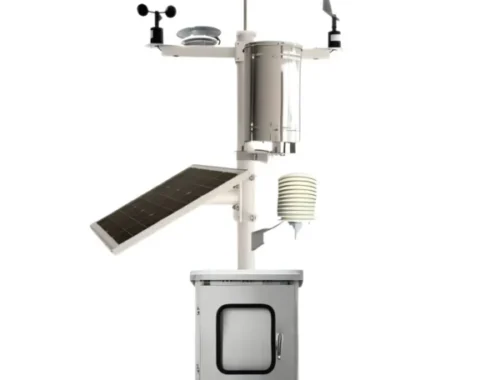Gryphon Ethos CD player-D/A processor
Click Here: Fjallraven Kanken Art Spring Landscape Backpacks
What kind of creature is this? Gryphon Audio Designs’ new Ethos ($39,000)—pronounced EE-toss by its Danish manufacturers—is marketed as a CD player and digital-to-analog converter. It’s decidedly au courant in that it includes two 32-bit/768kHz ES9038PRO Sabre DAC chips—one for each channel—with each holding eight individual DAC chips; offers optional upsampling to either 24/384 PCM or DSD128; and decodes up to 32/384 PCM and quadruple DSD (DSD512) via its USB input, or up to 24/192 (and no DSD) via AES/EBU or S/PDIF. It does not decode MQA or the high-resolution layer of an SACD disc, and it has no Ethernet port. Aspects of its styling are eye-catching and resolutely retro: Its strikingly lit, top-loading disc mechanism resembles an LP platter, access to which is gained by lifting a tonearm-like handle. The gold-plated puck that holds the CD in place (as on most or all toploaders) evokes nothing so much as a CD record weight.
Especially when its CD transport lights up from within during disc loading, the Gryphon Ethos is the most beautiful audio component I’ve ever had the opportunity to handle. Once I had made peace with its wide choice of reconstruction filters—seven PCM and three DSD—and decided whether I preferred its optional upsampling feature, or not, I found the Ethos among the easiest of components to control, whether by its front panel or (sturdy) remote. I frequently found myself gazing at what Gryphon refers to as the player’s “vacuum fluorescent” front panel display.
Like the gryphon of Greek mythology—its eagle head and wings and lion body are thought, by company founder Flemming E. Rasmussen, to represent “the perfect union” of grace and power—the Ethos is a singular creature that plays by its own rules.
From there to here
Gryphon’s heritage extends back to 1985, when Rasmussen founded the company and began designing the exteriors of all Gryphon components. Gryphon’s first product, a pure–class-A dual-mono head amp, was intended at first to enable Rasmussen to discern differences between phono cartridges more effectively. The revelation of detail and subtle differences were priorities from day one.
“It was the first pure dual-mono, pure class-A amplifier in the world, and it set our path forward,” Gryphon’s sales director, Rune Skov, explained at the start of a Skype conversation that also included Gryphon’s chief engineer/head of R&D, Tom Møller, and CEO Jakob Odgaard. For 35 years, the company has stuck to a philosophy that stresses a synergy between aesthetics and performance. Gryphon remains dedicated to pure class-A, dual-mono, and fully symmetrical balanced circuitry, and strives for a neutral sound that eschews an identifiable house signature—that and, in Odgaard’s words, “no fooling around with surround and multi-channel. We stick to what we were created for.” Take that, Kal Rubinson.
“We use the same pathways as in 1985 but have added a lot due to the creativity of Tom and the rest of the guys in the R&D team,” Skov said. Gryphon released the world’s first asynchronous upsampling CD player, the Gryphon CDP-1, in 1998. Speakers followed in 1999 with the Cantata, a large bookshelf loudspeaker that included outboard Linkwitz circuitry to correct woofer output to the room.
“Our philosophy is one of controlled madness,” said Skov with a laugh. “It’s controlled madness because it makes no sense building 200W pure class-A amplifiers. We don’t hold back on performance and would rather wait six months or one year to launch a product so that the performance level we seek is there. That’s why the lifespan for a Gryphon product can be 10–15 years.” Gryphon’s top-loading Mikado CD player with asynchronous 24/96 upsampling came out in 2001, and the upgraded Mikado Signature with asynchronous 32/192 upsampling remained available until 2013, when the company could no longer obtain Philips’ top- loading CD-Pro2 drive mechanism.
The design of the Ethos is intended to evoke Gryphon’s digital and vinyl heritage. The design called for a top-loading mechanism that could be aesthetically enhanced to resemble an LP player, and finding a high-quality CD/SACD top-loading mechanism was virtually impossible. So Gryphon went with StreamUnlimited of Austria’s CD-Pro 8 drive, which only handles CD. The Ethos is supported by Gryphon’s Atlas spikes, whose height is adjusted using the small tool and old-fashioned level that are supplied with the unit.
“Many of our competitors take the current from the output and transform that into an analog voltage,” Møller explained. “Instead, we take the voltage directly from the DAC circuitry and have a voltage-to-voltage, fully class-A amplifier that is a central aspect of the Ethos’s sound. Around the analog stage, the other components surrounding the transistors are discreet. We don’t use ICs or op-amps in the signal path—it is fully discreet. The only op-amps we use are incorporated as a DC servo to ensure that no DC leaks into the analog output. We use . . . Melf resistors, which have very low current and voltage noise. We also use polypropylene film capacitors and very good electrolytic capacitors as well. Because the power supply is indirectly part of the signal path, we paid a lot of attention to it. As for the player’s ports, we tried an Ethernet with another product, and we preferred the sound from USB when fed by a very good high-end USB cable.”
Other defining aspects of the Ethos’s design include a fully balanced class-A analog output stage that employs zero negative feedback. Outputs are balanced Neutrik XLR and single-ended gold-plated RCA. There are two separate analog toroidal transformers and two digital power supplies. (The Gryphon website has a long list of additional features that this Polly needn’t parrot.)
Getting it on
While it was a snap to connect the Ethos to my reference Audio Research Reference 6 preamplifier—I used balanced interconnects all the way to my D’Agostino Progression monoblocks—I encountered several challenges during setup and operation. Once, while playing hi-rez PCM and switching between PCM and DSD upsampling, the unit sent a few seconds of white noise through my speakers. It passed quickly, and no damage was done. It never happened again, even though I switched between DSD and PCM upsampling many times during playback.
Second, due to a production error in this early unit, its rear AES/EBU input lacked the requisite release lever. Once I had inserted my cable, I couldn’t remove it. Rather than risk damaging the unit by forcing it or inserting some sharp tool, I returned the Ethos at review’s end with the cable still attached and invited Gryphon to remove it and send it back.
I customarily send signals from my Roon Nucleus+ music server via Ethernet, but the Ethos is not a streaming DAC: I had to choose from its USB, AES/EBU, or S/PDIF inputs. Due to the structure of my multicomponent internet noise- isolation setup—a two-room equipment chain that Editor Jim Austin calls unduly complicated but which nonetheless contributes to my system’s high level of transparency and detail—I lacked the ability to move the Nucleus+ close to the Ethos and connect it via USB. (I’ve figured out a solution for next time.) That left me with two choices: I could connect the Nucleus+ to my extremely transparent dCS Network Bridge and send that component’s output signal to the Ethos via AES/EBU, which, however, limited playback to 24/192 PCM files (and no DSD). Or I could load files onto my Macbook Pro, play them with Roon or other software, and send the output to the Ethos via USB, which can handle resolutions up to DXD and DSD512.
At the start of my many happy listening sessions, I attached my 2017 Macbook Pro to the Ethos via a 2m Nordost Valhalla 2 USB cable that Nordost graciously supplied for the review. While the folks at Gryphon primarily use their own cabling for music playback, they recommend Nordost Valhalla 2 for USB.
You May Also Like

Automatic Weather Station: An Overview of Its Functionality and Applications
March 14, 2025
AI in Fashion: Revolutionizing Design, Shopping, and Sustainability
February 28, 2025